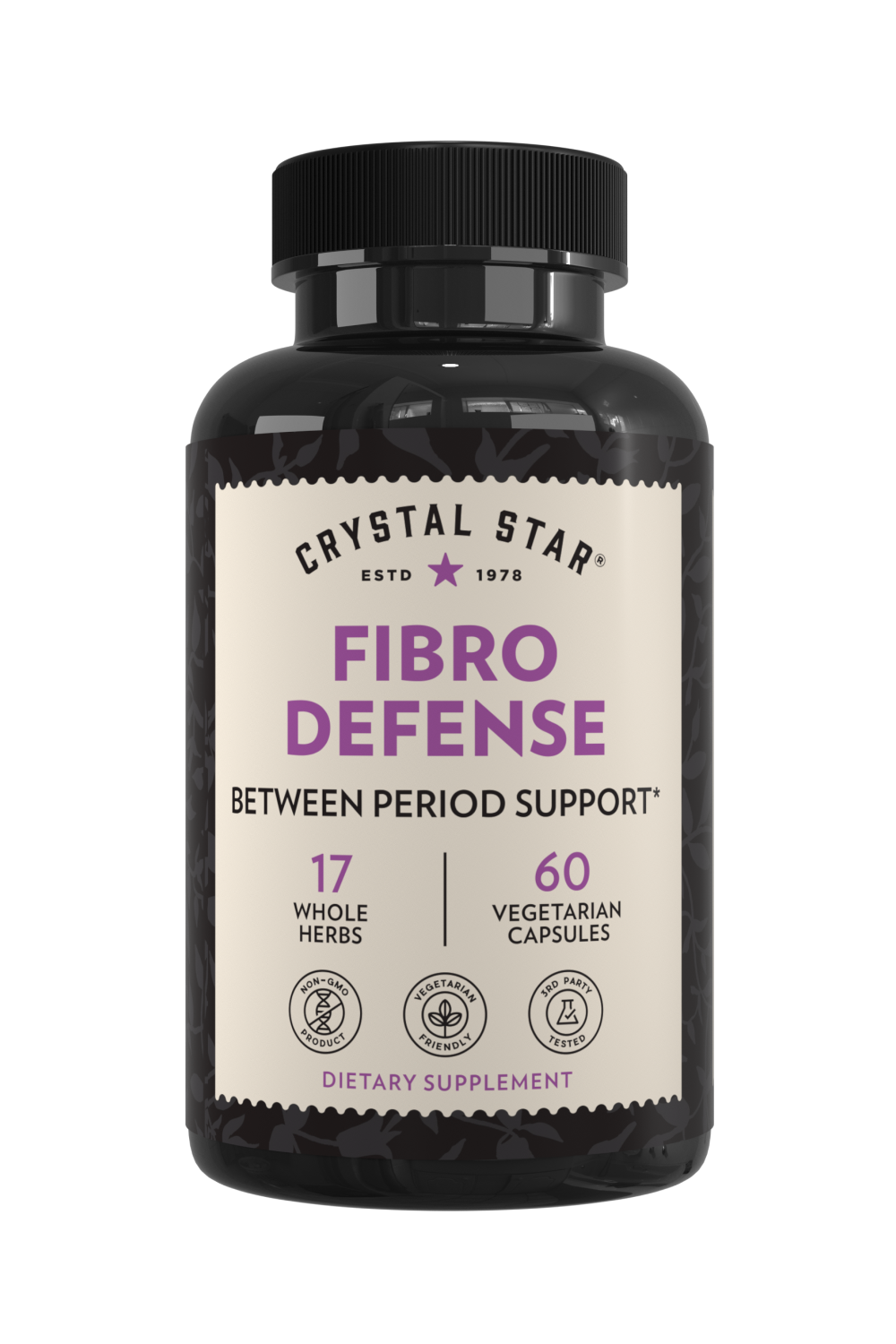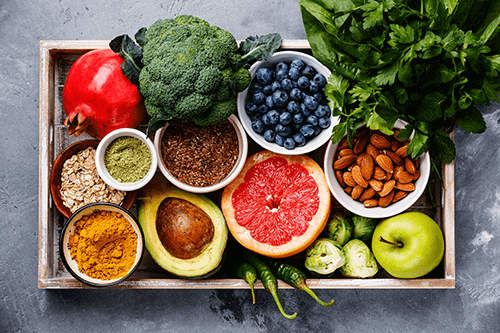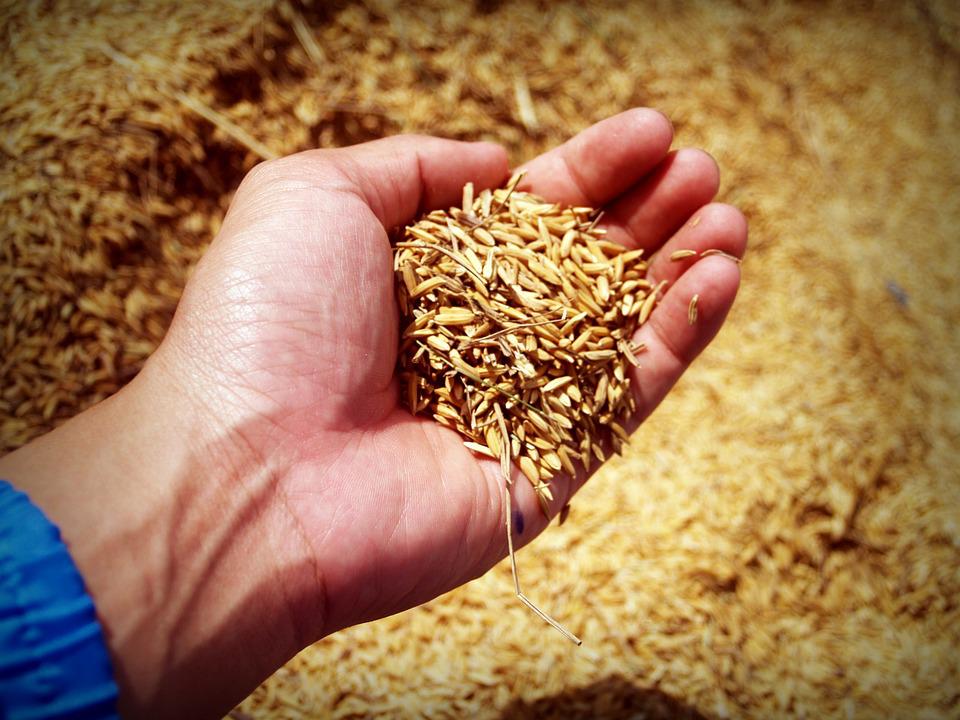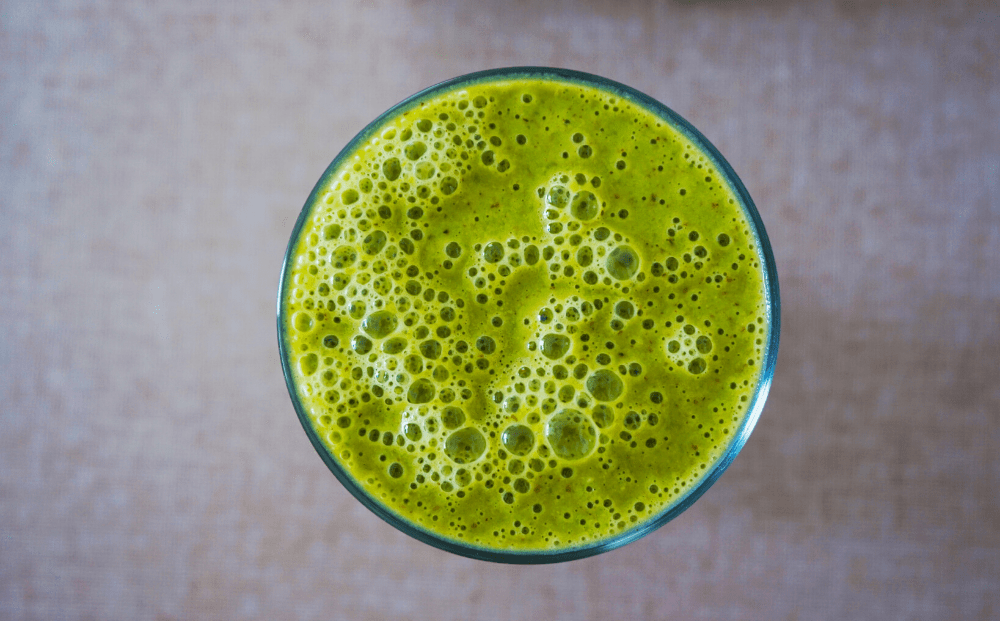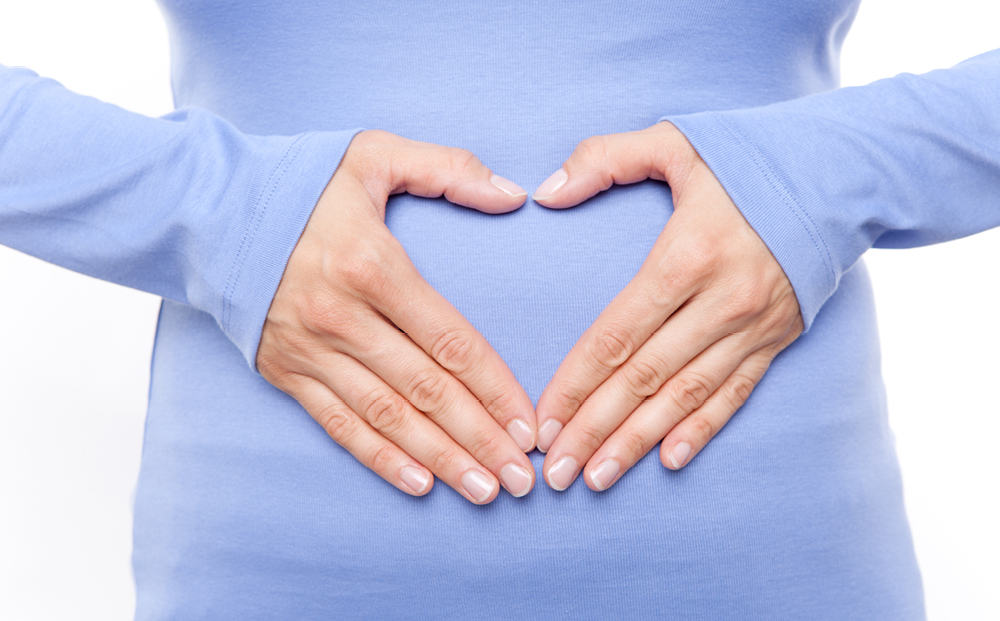
Jun 05, 2020
10 mins read
These are the best and worst foods for your microbiome
Welcome to your microbiome: a microscopic community of bacteria, viruses, and fungi that inhabit your body. You can’t see them with the naked eye, but these little symbiotic organisms are responsible for all sorts of bodily functions. They help us absorb nutrients, control our body weight, trigger immune responses, and may even make us crave specific foods.[1] [2] [3] Scientists have discovered thousands of species of organisms within our microbiomes, and balancing their populations is extremely important to overall health.[4] Antibiotics, illness, and stress can all have adverse effects on our microbes.[5] [6] So what can we do to counteract those events and promote balance from the inside out? The answer: food! Scientists have discovered that a change in diet can significantly alter your microbiome within just 24 hours.[7] [socialpug_tweet tweet="Scientists have discovered thousands of species of organisms within our microbiomes, and balancing their populations is extremely important to overall health." display_tweet=""] In this post, we’ll cover four foods that feed your microbiome and four that disrupt it. We’ll break down the nutritional benefits (or lack thereof) of each food and explore the scientific research behind them.
 Let’s start with an easy one: chocolate. That’s right—delicious chocolatey cocoa powder is beneficial for your microbiome. Cocoa contains plant compounds called polyphenols. These compounds promote the growth of two genera of beneficial gut bacteria: Bifidobacterium and Lactobacillus.[11] Cocoa is also rich in a specific type of polyphenol: flavonoids, which have numerous health benefits.[12] Flavonoids contain antioxidant, anti-inflammatory, antimutagenic, and anticarcinogenic properties.[13] A 2010 study used cocoa flavanol drinks to measure their effect on select gut microflora. Researchers found those who drank the high-cocoa option for four weeks ended up with more beneficial gut microbes. The cocoa increased their populations of Bifidobacteria and Lactobacilli and also decreased the numbers of potentially bad bacteria, Clostridia.[14] [socialpug_tweet tweet="Cocoa is also rich in a specific type of polyphenol: flavonoids, which have numerous health benefits." display_tweet=""] Typically, the darker the chocolate, the more cocoa bean it contains. So look for dark chocolate with the least additives. It may be more bitter, but your gut will act sweeter.[15] Other foods that are high in polyphenols include cloves, peppermint, flaxseed, black elderberries, and olives.[16]
Let’s start with an easy one: chocolate. That’s right—delicious chocolatey cocoa powder is beneficial for your microbiome. Cocoa contains plant compounds called polyphenols. These compounds promote the growth of two genera of beneficial gut bacteria: Bifidobacterium and Lactobacillus.[11] Cocoa is also rich in a specific type of polyphenol: flavonoids, which have numerous health benefits.[12] Flavonoids contain antioxidant, anti-inflammatory, antimutagenic, and anticarcinogenic properties.[13] A 2010 study used cocoa flavanol drinks to measure their effect on select gut microflora. Researchers found those who drank the high-cocoa option for four weeks ended up with more beneficial gut microbes. The cocoa increased their populations of Bifidobacteria and Lactobacilli and also decreased the numbers of potentially bad bacteria, Clostridia.[14] [socialpug_tweet tweet="Cocoa is also rich in a specific type of polyphenol: flavonoids, which have numerous health benefits." display_tweet=""] Typically, the darker the chocolate, the more cocoa bean it contains. So look for dark chocolate with the least additives. It may be more bitter, but your gut will act sweeter.[15] Other foods that are high in polyphenols include cloves, peppermint, flaxseed, black elderberries, and olives.[16]
Are nuts good for your microbiome?
Nuts are one of nature’s nutritional treasures. They’re full of beneficial short-chain fatty acids (SCFA), prebiotic fibers, polyphenols, vitamins, and minerals. They also act as an excellent source for plant-based protein. Studies show that plant-protein can increase beneficial microbes and decrease harmful pathogens like streptococci—the bacteria that causes strep throat.[17] Scientists have linked several nuts to microbiome health, including almonds, pistachios, and walnuts.[18] In one study, subjects ate 43 grams of walnuts per day for eight weeks. At the end of their study, the subjects experienced increased microbiome balance and diversity.[19] [socialpug_tweet tweet="Studies show that plant-protein can increase beneficial microbes and decrease harmful pathogens like streptococci—the bacteria that causes strep throat." display_tweet=""] Additional sources of high-protein plants include pumpkin seeds, peanut butter, tempeh, lentils, and tofu.[20]
 Chicory is an edible plant with many beneficial properties. All parts of the plant are safe to eat, and some people say the roasted roots taste like coffee. Chicory is a great source of carbohydrates, protein, vitamins, and polyphenols. The plant contains anti-inflammatory, anticarcinogenic, antimicrobial, and immune-stimulating compounds.[21] But the real champion of chicory is its inulin. Inulin is a fermentable fiber that acts as a prebiotic. Prebiotics are non-digestible food particles that help feed your beneficial microorganisms.[22] Without prebiotics, your microbiome can become malnourished and inflamed.[23] Several studies have looked at the antibacterial properties of chicory. The plant is active against pathogens including E. coli, Staphylococcus, Salmonella, and Candida albicans. Chicory can also inhibit the formation of biofilms—protective coverings that prevent pathogens from removal.[24] [socialpug_tweet tweet="Without prebiotics, your microbiome can become malnourished and inflamed." display_tweet=""] Other significant sources of prebiotics include asparagus, onions, wheat, garlic, oats, and Jerusalem artichokes.[25]
Chicory is an edible plant with many beneficial properties. All parts of the plant are safe to eat, and some people say the roasted roots taste like coffee. Chicory is a great source of carbohydrates, protein, vitamins, and polyphenols. The plant contains anti-inflammatory, anticarcinogenic, antimicrobial, and immune-stimulating compounds.[21] But the real champion of chicory is its inulin. Inulin is a fermentable fiber that acts as a prebiotic. Prebiotics are non-digestible food particles that help feed your beneficial microorganisms.[22] Without prebiotics, your microbiome can become malnourished and inflamed.[23] Several studies have looked at the antibacterial properties of chicory. The plant is active against pathogens including E. coli, Staphylococcus, Salmonella, and Candida albicans. Chicory can also inhibit the formation of biofilms—protective coverings that prevent pathogens from removal.[24] [socialpug_tweet tweet="Without prebiotics, your microbiome can become malnourished and inflamed." display_tweet=""] Other significant sources of prebiotics include asparagus, onions, wheat, garlic, oats, and Jerusalem artichokes.[25]
 Kimchi is a traditional Korean dish made of fermented vegetables, including cabbage, garlic, ginger, and red pepper. Similar to sauerkraut, kimchi combines vegetables and salt to pickle the ingredients and grow healthy bacteria that you can eat.[26] Foods containing edible bacteria are called probiotics, and eating them can improve your microbiome. Probiotics, or fermentable foods, contain lactic acid bacteria that can enter your microbiome and regulate your intestinal health. They can increase your microbiome diversity and add competition for potentially harmful bacteria. Many studies suggest that consuming probiotics may also produce systemic anti-inflammatory responses.[27] [28] [socialpug_tweet tweet="Foods containing edible bacteria are called probiotics and eating them can improve your microbiome." display_tweet=""] In one study, the effects of fresh and fermented kimchi consumption were tested on Korean women. They found that only pickled kimchi changed the intestinal flora of the women. This implies that the edible bacteria had the most potent effects on the microbiome.[29] Other kinds of good bacteria–foods include fermented dairy products, pickles, sauerkraut, and kombucha.[30]
Kimchi is a traditional Korean dish made of fermented vegetables, including cabbage, garlic, ginger, and red pepper. Similar to sauerkraut, kimchi combines vegetables and salt to pickle the ingredients and grow healthy bacteria that you can eat.[26] Foods containing edible bacteria are called probiotics, and eating them can improve your microbiome. Probiotics, or fermentable foods, contain lactic acid bacteria that can enter your microbiome and regulate your intestinal health. They can increase your microbiome diversity and add competition for potentially harmful bacteria. Many studies suggest that consuming probiotics may also produce systemic anti-inflammatory responses.[27] [28] [socialpug_tweet tweet="Foods containing edible bacteria are called probiotics and eating them can improve your microbiome." display_tweet=""] In one study, the effects of fresh and fermented kimchi consumption were tested on Korean women. They found that only pickled kimchi changed the intestinal flora of the women. This implies that the edible bacteria had the most potent effects on the microbiome.[29] Other kinds of good bacteria–foods include fermented dairy products, pickles, sauerkraut, and kombucha.[30]
 Not all foods help your gut; some actually disrupt it. So if you’re looking to create a healthy habitat for your microorganisms, avoiding the following foods may help.
Not all foods help your gut; some actually disrupt it. So if you’re looking to create a healthy habitat for your microorganisms, avoiding the following foods may help.
References: Amie Durenberger is a professional naturalist and science journalist located in Minneapolis, Minnesota. Since 2013, she has worked as an environmental educator, teaching children and adults about biodiversity, conservation, and edible & medicinal plant uses. Her favorite herbal preparations include fresh nettle tea, homemade plantain salve, and wild sumac lemonade. [1] https://www.ncbi.nlm.nih.gov/pmc/articles/PMC3426293/ [2] https://www.ncbi.nlm.nih.gov/pmc/articles/PMC3337124/ [3] https://www.ncbi.nlm.nih.gov/pmc/articles/PMC4270213/ [4] https://www.sciencedirect.com/science/article/pii/S0092867419300017 [5] https://www.ncbi.nlm.nih.gov/pmc/articles/PMC5483960/ [6] https://www.ncbi.nlm.nih.gov/pmc/articles/PMC6143810/ [7] https://www.ncbi.nlm.nih.gov/pmc/articles/PMC5385025/ [8] https://www.ncbi.nlm.nih.gov/pmc/articles/PMC5951603/ [9] https://www.ncbi.nlm.nih.gov/pmc/articles/PMC4837298/ [10] https://www.ncbi.nlm.nih.gov/pmc/articles/PMC4337795/ [11] https://www.ncbi.nlm.nih.gov/pmc/articles/PMC5385025/ [12] https://www.ncbi.nlm.nih.gov/pmc/articles/PMC3566565/ [13] https://www.ncbi.nlm.nih.gov/pmc/articles/PMC5465813/ [14] https://academic.oup.com/ajcn/article-lookup/doi/10.3945/ajcn.110.000075 [15] https://www.candyusa.com/story-of-chocolate/what-is-chocolate/kinds-of-chocolate/ [16] https://www.nature.com/articles/ejcn2010221.pdf?origin=ppub [17] https://www.professionalabstracts.com/ueg2019/iplanner/#/presentation/1401 [18] https://www.ncbi.nlm.nih.gov/pmc/articles/PMC5646185/ [19] https://www.ncbi.nlm.nih.gov/pmc/articles/PMC5852820/ [20] https://vegetariannutrition.net/docs/Protein-Vegetarian-Nutrition.pdf [21] https://www.ncbi.nlm.nih.gov/pmc/articles/PMC5745685/ [22] https://www.ncbi.nlm.nih.gov/pmc/articles/PMC5385025/ [23] https://www.ncbi.nlm.nih.gov/pmc/articles/PMC6005665/ [24] https://www.ncbi.nlm.nih.gov/pmc/articles/PMC3860133/ [25] https://www.ncbi.nlm.nih.gov/pmc/articles/PMC6041804/ [26] https://www.ncbi.nlm.nih.gov/pubmed/24456350 [27] https://www.ncbi.nlm.nih.gov/pmc/articles/PMC5385025/ [28] https://www.ncbi.nlm.nih.gov/pmc/articles/PMC3539293/ [29] https://www.researchgate.net/publication/272423505_Contrasting_effects_of_fresh_and_fermented_kimchi_consumption_on_gut_microbiota_composition_and_gene_expression_related_to_metabolic_syndrome_in_obese_Korean_women [30] https://ods.od.nih.gov/factsheets/Probiotics-HealthProfessional/ [31] https://www.ncbi.nlm.nih.gov/pubmed/25231862 [32] https://www.nih.gov/news-events/nih-research-matters/gut-microbes-affect-harmful-compound-red-meat [33] https://www.nih.gov/news-events/nih-research-matters/red-meat-heart-disease-link-involves-gut-microbes [34] https://www.ncbi.nlm.nih.gov/pmc/articles/PMC5872783/ [35] https://www.ncbi.nlm.nih.gov/pubmed/29131494 [36]https://www.niddk.nih.gov/health-information/diabetes/overview/diet-eating-physical-activity/carbohydrate-counting [37] https://www.uwhealth.org/healthfacts/nutrition/376.pdf [38] https://www.ncbi.nlm.nih.gov/pmc/articles/PMC6024874/ [39] https://www.ncbi.nlm.nih.gov/pubmed/28249783 [40] https://www.ncbi.nlm.nih.gov/pmc/articles/PMC302772/
4 foods to eat for a healthy microbiome
Feeding your microbiome is as easy as feeding yourself. Every time you eat, your body splits the feast. Some parts of your food contain nutrients that your body can easily absorb. And other parts travel to your colon, where your microorganisms have their own picnic.[8] Selecting smart foods can increase species diversity in your gut, which is incredibly important for your health. Every species in your microbiome serves a unique function in the body and can release distinct metabolites to promote wellbeing. A lack of species diversity can lead to dysbiosis, or an unbalanced microbiome, which is associated with several diseases.[9] [10] Scientists have discovered that certain foods provide more fuel for your microorganisms than others. So, let’s check out four foods that can help make for a healthy gut.Cocoa feeds your microbiome
 Let’s start with an easy one: chocolate. That’s right—delicious chocolatey cocoa powder is beneficial for your microbiome. Cocoa contains plant compounds called polyphenols. These compounds promote the growth of two genera of beneficial gut bacteria: Bifidobacterium and Lactobacillus.[11] Cocoa is also rich in a specific type of polyphenol: flavonoids, which have numerous health benefits.[12] Flavonoids contain antioxidant, anti-inflammatory, antimutagenic, and anticarcinogenic properties.[13] A 2010 study used cocoa flavanol drinks to measure their effect on select gut microflora. Researchers found those who drank the high-cocoa option for four weeks ended up with more beneficial gut microbes. The cocoa increased their populations of Bifidobacteria and Lactobacilli and also decreased the numbers of potentially bad bacteria, Clostridia.[14] [socialpug_tweet tweet="Cocoa is also rich in a specific type of polyphenol: flavonoids, which have numerous health benefits." display_tweet=""] Typically, the darker the chocolate, the more cocoa bean it contains. So look for dark chocolate with the least additives. It may be more bitter, but your gut will act sweeter.[15] Other foods that are high in polyphenols include cloves, peppermint, flaxseed, black elderberries, and olives.[16]
Let’s start with an easy one: chocolate. That’s right—delicious chocolatey cocoa powder is beneficial for your microbiome. Cocoa contains plant compounds called polyphenols. These compounds promote the growth of two genera of beneficial gut bacteria: Bifidobacterium and Lactobacillus.[11] Cocoa is also rich in a specific type of polyphenol: flavonoids, which have numerous health benefits.[12] Flavonoids contain antioxidant, anti-inflammatory, antimutagenic, and anticarcinogenic properties.[13] A 2010 study used cocoa flavanol drinks to measure their effect on select gut microflora. Researchers found those who drank the high-cocoa option for four weeks ended up with more beneficial gut microbes. The cocoa increased their populations of Bifidobacteria and Lactobacilli and also decreased the numbers of potentially bad bacteria, Clostridia.[14] [socialpug_tweet tweet="Cocoa is also rich in a specific type of polyphenol: flavonoids, which have numerous health benefits." display_tweet=""] Typically, the darker the chocolate, the more cocoa bean it contains. So look for dark chocolate with the least additives. It may be more bitter, but your gut will act sweeter.[15] Other foods that are high in polyphenols include cloves, peppermint, flaxseed, black elderberries, and olives.[16]
Are nuts good for your microbiome? 
Nuts are one of nature’s nutritional treasures. They’re full of beneficial short-chain fatty acids (SCFA), prebiotic fibers, polyphenols, vitamins, and minerals. They also act as an excellent source for plant-based protein. Studies show that plant-protein can increase beneficial microbes and decrease harmful pathogens like streptococci—the bacteria that causes strep throat.[17] Scientists have linked several nuts to microbiome health, including almonds, pistachios, and walnuts.[18] In one study, subjects ate 43 grams of walnuts per day for eight weeks. At the end of their study, the subjects experienced increased microbiome balance and diversity.[19] [socialpug_tweet tweet="Studies show that plant-protein can increase beneficial microbes and decrease harmful pathogens like streptococci—the bacteria that causes strep throat." display_tweet=""] Additional sources of high-protein plants include pumpkin seeds, peanut butter, tempeh, lentils, and tofu.[20]
What is chicory, and how can it help my microbiome?
 Chicory is an edible plant with many beneficial properties. All parts of the plant are safe to eat, and some people say the roasted roots taste like coffee. Chicory is a great source of carbohydrates, protein, vitamins, and polyphenols. The plant contains anti-inflammatory, anticarcinogenic, antimicrobial, and immune-stimulating compounds.[21] But the real champion of chicory is its inulin. Inulin is a fermentable fiber that acts as a prebiotic. Prebiotics are non-digestible food particles that help feed your beneficial microorganisms.[22] Without prebiotics, your microbiome can become malnourished and inflamed.[23] Several studies have looked at the antibacterial properties of chicory. The plant is active against pathogens including E. coli, Staphylococcus, Salmonella, and Candida albicans. Chicory can also inhibit the formation of biofilms—protective coverings that prevent pathogens from removal.[24] [socialpug_tweet tweet="Without prebiotics, your microbiome can become malnourished and inflamed." display_tweet=""] Other significant sources of prebiotics include asparagus, onions, wheat, garlic, oats, and Jerusalem artichokes.[25]
Chicory is an edible plant with many beneficial properties. All parts of the plant are safe to eat, and some people say the roasted roots taste like coffee. Chicory is a great source of carbohydrates, protein, vitamins, and polyphenols. The plant contains anti-inflammatory, anticarcinogenic, antimicrobial, and immune-stimulating compounds.[21] But the real champion of chicory is its inulin. Inulin is a fermentable fiber that acts as a prebiotic. Prebiotics are non-digestible food particles that help feed your beneficial microorganisms.[22] Without prebiotics, your microbiome can become malnourished and inflamed.[23] Several studies have looked at the antibacterial properties of chicory. The plant is active against pathogens including E. coli, Staphylococcus, Salmonella, and Candida albicans. Chicory can also inhibit the formation of biofilms—protective coverings that prevent pathogens from removal.[24] [socialpug_tweet tweet="Without prebiotics, your microbiome can become malnourished and inflamed." display_tweet=""] Other significant sources of prebiotics include asparagus, onions, wheat, garlic, oats, and Jerusalem artichokes.[25]
Kimchi can promote intestinal health
 Kimchi is a traditional Korean dish made of fermented vegetables, including cabbage, garlic, ginger, and red pepper. Similar to sauerkraut, kimchi combines vegetables and salt to pickle the ingredients and grow healthy bacteria that you can eat.[26] Foods containing edible bacteria are called probiotics, and eating them can improve your microbiome. Probiotics, or fermentable foods, contain lactic acid bacteria that can enter your microbiome and regulate your intestinal health. They can increase your microbiome diversity and add competition for potentially harmful bacteria. Many studies suggest that consuming probiotics may also produce systemic anti-inflammatory responses.[27] [28] [socialpug_tweet tweet="Foods containing edible bacteria are called probiotics and eating them can improve your microbiome." display_tweet=""] In one study, the effects of fresh and fermented kimchi consumption were tested on Korean women. They found that only pickled kimchi changed the intestinal flora of the women. This implies that the edible bacteria had the most potent effects on the microbiome.[29] Other kinds of good bacteria–foods include fermented dairy products, pickles, sauerkraut, and kombucha.[30]
Kimchi is a traditional Korean dish made of fermented vegetables, including cabbage, garlic, ginger, and red pepper. Similar to sauerkraut, kimchi combines vegetables and salt to pickle the ingredients and grow healthy bacteria that you can eat.[26] Foods containing edible bacteria are called probiotics, and eating them can improve your microbiome. Probiotics, or fermentable foods, contain lactic acid bacteria that can enter your microbiome and regulate your intestinal health. They can increase your microbiome diversity and add competition for potentially harmful bacteria. Many studies suggest that consuming probiotics may also produce systemic anti-inflammatory responses.[27] [28] [socialpug_tweet tweet="Foods containing edible bacteria are called probiotics and eating them can improve your microbiome." display_tweet=""] In one study, the effects of fresh and fermented kimchi consumption were tested on Korean women. They found that only pickled kimchi changed the intestinal flora of the women. This implies that the edible bacteria had the most potent effects on the microbiome.[29] Other kinds of good bacteria–foods include fermented dairy products, pickles, sauerkraut, and kombucha.[30]
4 foods that harm your microbiome
 Not all foods help your gut; some actually disrupt it. So if you’re looking to create a healthy habitat for your microorganisms, avoiding the following foods may help.
Not all foods help your gut; some actually disrupt it. So if you’re looking to create a healthy habitat for your microorganisms, avoiding the following foods may help.
Are artificial sweeteners bad for your gut?
Artificial sweeteners are a commonly consumed food group that offer an alternative option to natural sugars. While artificial sugars can be enticing to individuals with diabetes or weight issues, research shows they may negatively affect the microbiome. In one study, mice fed with artificial sweeteners exhibited signs of intestinal dysbiosis, or unbalanced microbiomes. The mice had reduced levels of beneficial Lactobacillus bacteria and an increase in Bacteroides. Scientists believe that the microbial changes caused by artificial sweeteners can lead to glucose intolerance, or pre-diabetes.[31] However, more human studies are needed to fully understand the effects of artificial sweeteners. [socialpug_tweet tweet="Scientists believe that the microbial changes caused by artificial sweeteners can lead to glucose intolerance, or pre-diabetes." display_tweet=""]Red meat can disrupt your gut microbiome
Beef consumption is connected to several health conditions, including heart disease and colon cancer. Recent studies suggest that the microbiome may be the missing link between red meat and these conditions. Beef contains a sugar molecule called Neu5Gc. Many mammals naturally produce this molecule on their own, but humans do not. We encounter it primarily through the consumption of red meat. Scientists believe that when Neu5Gc enters the body, our immune systems recognize it as a foreign pathogen and create inflammation. A 2019 study tested the effects of Neu5Gc from red meat on the intestinal flora of mice. They found that mice fed a diet rich in red meat experienced a reduction in their microbiome diversity.[32] Other compounds found in beef, such as carnitine, can also negatively change the microbiome and promote heart diseases.[33]Processed foods can harm your microbiome
Processed foods come in many shapes and sizes. They’re foods that are made partially or entirely from extracted food substances such as oils, fats, or sugars. They can also contain added flavors, colors, and preservatives. The issue with processed foods is cellular. Many types of food processing can break nutrient cell walls. This is a problem because your microbiome feeds off of intact cells. This is why the same food can have different effects on your gut, depending on how it's been processed. For example, processed meats are associated with higher disease rates than natural meats. And whole grains have nutritional benefits, while refined grains can cause health issues.[34] Glycerol monolaurate (GML) is a preservative added to many processed meats and bakery goods. In one study, researchers found that low-dose consumption of GML caused microbiota dysbiosis, metabolic syndrome, and inflammation in mice.[35] More human studies are needed to fully know the effects of processed foods on the microbiome.Can natural sugars cause microbiome issues?
It’s not just artificial sugar that causes microbiome disturbances. High levels of natural sugars can also cause issues in your gut. One study compared the effects of high-sugar and low-sugar diets in mice. They found that high levels of both glucose and fructose, two sugars found naturally in foods, diminished microbial diversity.[36][37] These diets also promoted intestinal inflammation and increased gut permeability.[38] Another study found similar results of excess sugar on the microbiome. They noted that high amounts of sugar could create microbial dysbiosis. This was characterized by an increase in proteobacteria—a group of bacteria associated with liver damage.[39] Not only can excess sugar affect your gut bacteria, but it can also change your mycobiome—your community of beneficial fungi. Several studies connect glucose consumption to an overgrowth of Candida—a group of fungi that can cause infections in humans.[40]How can I feed my microbiome?
If you’re hoping to increase your gut health by providing nutrients for your microbiome, changing your diet can be helpful. If you eat the right foods, your intestinal flora can change within just 24 hours. And continuing these habits can provide lasting benefits. To help your gut microbiome, remember to eat the four p’s: polyphenols, plant-protein, prebiotics, and probiotics. Foods containing these compounds can help you feed your microorganisms and possibly avoid disease. [socialpug_tweet tweet="If you eat the right foods, your intestinal flora can change within just 24 hours" display_tweet=""] Other foods, such as red meat, processed foods, artificial sugar, and excess natural sugar, may actually harm your gut. These foods can change the composition and diversity of your microbiome in a way that may promote illness. Your microbiome can respond to even small changes in your diet. So taking the first step to eat healthier is a great place to start. Many types of food can feed both you and your microbiome—all you have to do is listen to your gut.References: Amie Durenberger is a professional naturalist and science journalist located in Minneapolis, Minnesota. Since 2013, she has worked as an environmental educator, teaching children and adults about biodiversity, conservation, and edible & medicinal plant uses. Her favorite herbal preparations include fresh nettle tea, homemade plantain salve, and wild sumac lemonade. [1] https://www.ncbi.nlm.nih.gov/pmc/articles/PMC3426293/ [2] https://www.ncbi.nlm.nih.gov/pmc/articles/PMC3337124/ [3] https://www.ncbi.nlm.nih.gov/pmc/articles/PMC4270213/ [4] https://www.sciencedirect.com/science/article/pii/S0092867419300017 [5] https://www.ncbi.nlm.nih.gov/pmc/articles/PMC5483960/ [6] https://www.ncbi.nlm.nih.gov/pmc/articles/PMC6143810/ [7] https://www.ncbi.nlm.nih.gov/pmc/articles/PMC5385025/ [8] https://www.ncbi.nlm.nih.gov/pmc/articles/PMC5951603/ [9] https://www.ncbi.nlm.nih.gov/pmc/articles/PMC4837298/ [10] https://www.ncbi.nlm.nih.gov/pmc/articles/PMC4337795/ [11] https://www.ncbi.nlm.nih.gov/pmc/articles/PMC5385025/ [12] https://www.ncbi.nlm.nih.gov/pmc/articles/PMC3566565/ [13] https://www.ncbi.nlm.nih.gov/pmc/articles/PMC5465813/ [14] https://academic.oup.com/ajcn/article-lookup/doi/10.3945/ajcn.110.000075 [15] https://www.candyusa.com/story-of-chocolate/what-is-chocolate/kinds-of-chocolate/ [16] https://www.nature.com/articles/ejcn2010221.pdf?origin=ppub [17] https://www.professionalabstracts.com/ueg2019/iplanner/#/presentation/1401 [18] https://www.ncbi.nlm.nih.gov/pmc/articles/PMC5646185/ [19] https://www.ncbi.nlm.nih.gov/pmc/articles/PMC5852820/ [20] https://vegetariannutrition.net/docs/Protein-Vegetarian-Nutrition.pdf [21] https://www.ncbi.nlm.nih.gov/pmc/articles/PMC5745685/ [22] https://www.ncbi.nlm.nih.gov/pmc/articles/PMC5385025/ [23] https://www.ncbi.nlm.nih.gov/pmc/articles/PMC6005665/ [24] https://www.ncbi.nlm.nih.gov/pmc/articles/PMC3860133/ [25] https://www.ncbi.nlm.nih.gov/pmc/articles/PMC6041804/ [26] https://www.ncbi.nlm.nih.gov/pubmed/24456350 [27] https://www.ncbi.nlm.nih.gov/pmc/articles/PMC5385025/ [28] https://www.ncbi.nlm.nih.gov/pmc/articles/PMC3539293/ [29] https://www.researchgate.net/publication/272423505_Contrasting_effects_of_fresh_and_fermented_kimchi_consumption_on_gut_microbiota_composition_and_gene_expression_related_to_metabolic_syndrome_in_obese_Korean_women [30] https://ods.od.nih.gov/factsheets/Probiotics-HealthProfessional/ [31] https://www.ncbi.nlm.nih.gov/pubmed/25231862 [32] https://www.nih.gov/news-events/nih-research-matters/gut-microbes-affect-harmful-compound-red-meat [33] https://www.nih.gov/news-events/nih-research-matters/red-meat-heart-disease-link-involves-gut-microbes [34] https://www.ncbi.nlm.nih.gov/pmc/articles/PMC5872783/ [35] https://www.ncbi.nlm.nih.gov/pubmed/29131494 [36]https://www.niddk.nih.gov/health-information/diabetes/overview/diet-eating-physical-activity/carbohydrate-counting [37] https://www.uwhealth.org/healthfacts/nutrition/376.pdf [38] https://www.ncbi.nlm.nih.gov/pmc/articles/PMC6024874/ [39] https://www.ncbi.nlm.nih.gov/pubmed/28249783 [40] https://www.ncbi.nlm.nih.gov/pmc/articles/PMC302772/


